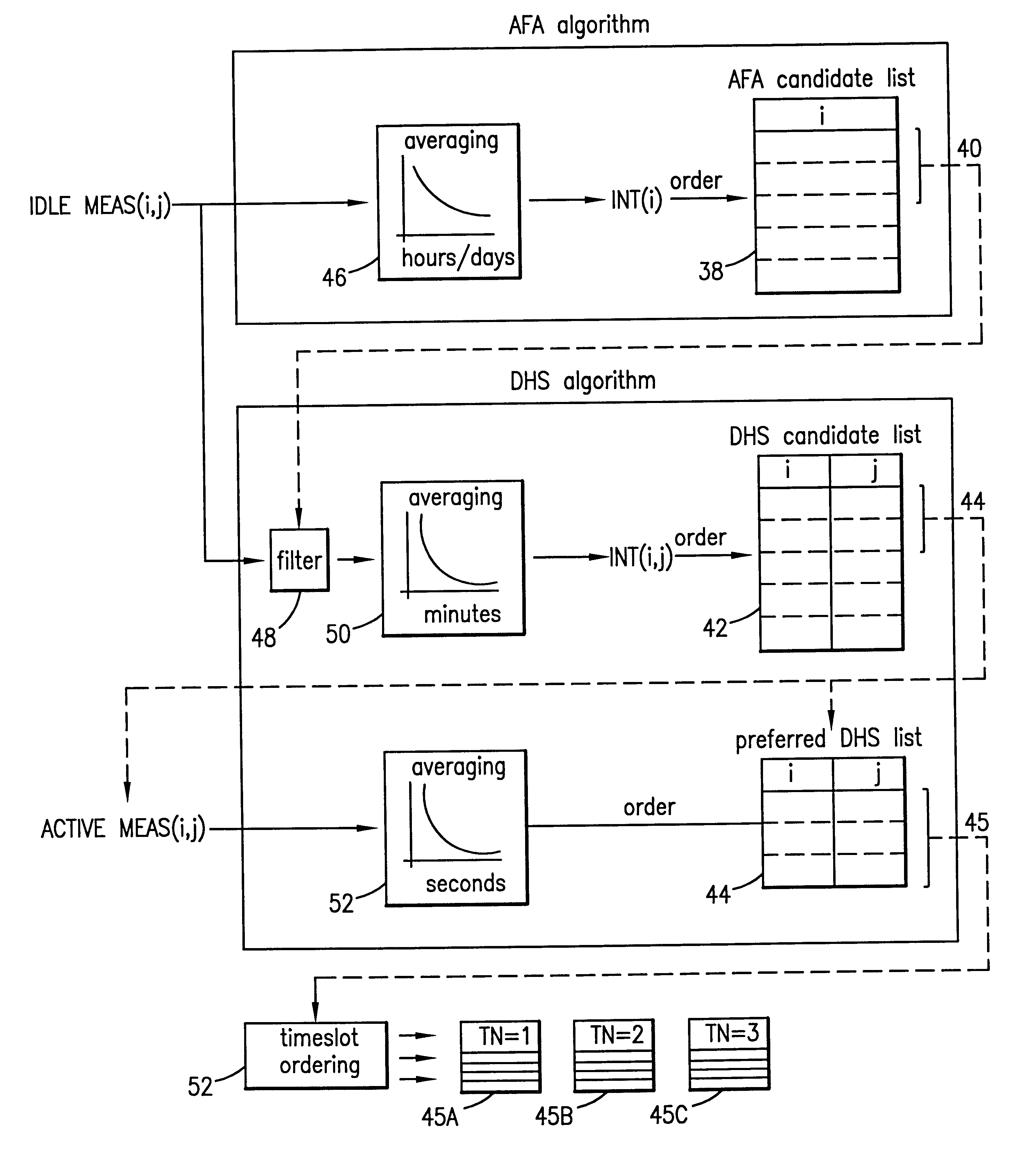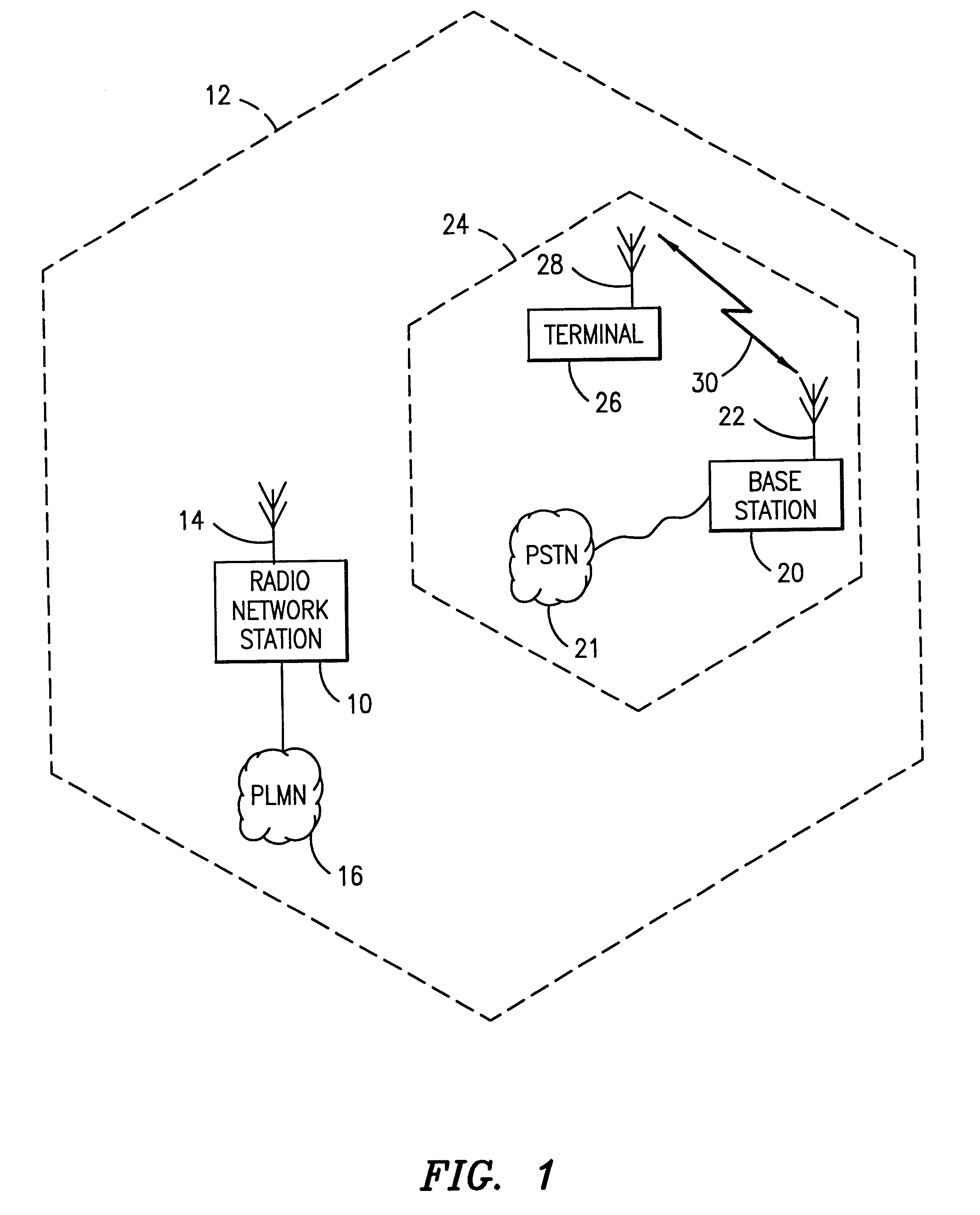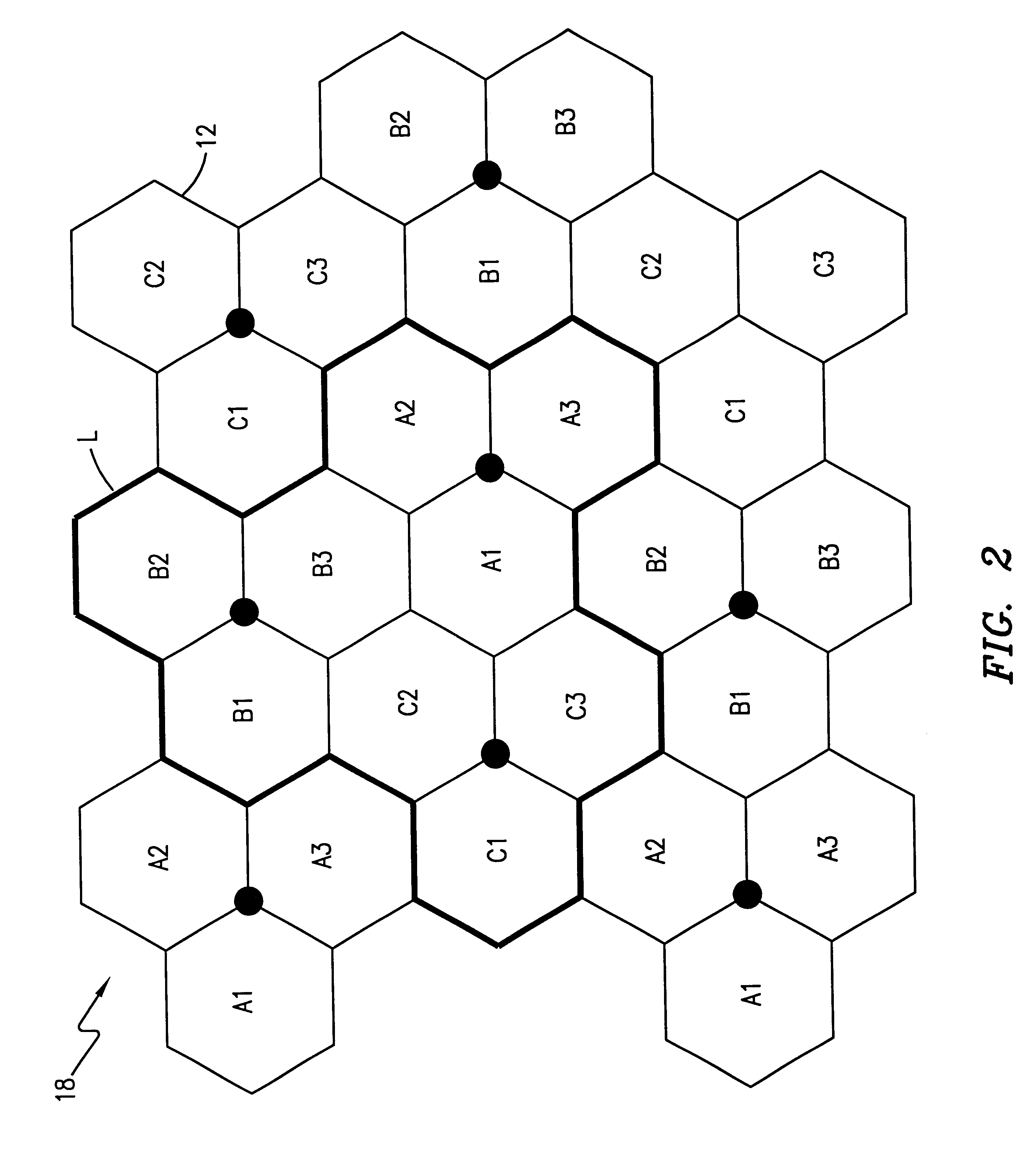Method and system for autonomously allocating a frequency hopping traffic channel in a private radio system
a technology of private radio and traffic channel, applied in the field of private radio communication system, can solve the problems of collision, random hopping, and private system cannot be considered as micro or pico networks, and achieve the effect of preventing interference and preventing interferen
- Summary
- Abstract
- Description
- Claims
- Application Information
AI Technical Summary
Benefits of technology
Problems solved by technology
Method used
Image
Examples
Embodiment Construction
The present invention will now be described more fully hereinafter with reference to the accompanying drawings, in which preferred embodiments of the invention are shown. This invention may, however, be embodied in many different forms and should not be construed as limited to the embodiments set forth herein; rather, these embodiments are provided so that this disclosure will be thorough and complete, and will fully convey the scope of the invention to those skilled in the art.
Referring now to FIG. 1, a conceptual diagram of a private radio communications system according to the present invention is shown. Such a system operates within a cellular communications network which allocates portions of a plurality of frequencies within a spectrum to separate geographic cells. Thus, the network encompasses a wide area wireless communications network having the capacity to provide high quality wireless communications to a large number of users with a limited number of frequencies allocated...
PUM
 Login to View More
Login to View More Abstract
Description
Claims
Application Information
 Login to View More
Login to View More - R&D
- Intellectual Property
- Life Sciences
- Materials
- Tech Scout
- Unparalleled Data Quality
- Higher Quality Content
- 60% Fewer Hallucinations
Browse by: Latest US Patents, China's latest patents, Technical Efficacy Thesaurus, Application Domain, Technology Topic, Popular Technical Reports.
© 2025 PatSnap. All rights reserved.Legal|Privacy policy|Modern Slavery Act Transparency Statement|Sitemap|About US| Contact US: help@patsnap.com



